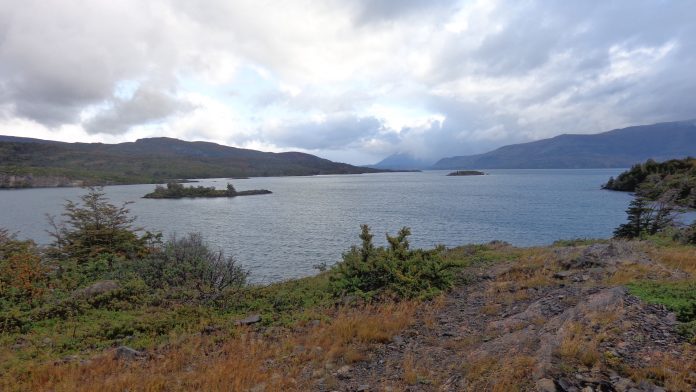Study published in Nature Communications, allowed to reconstruct climate fluctuations in the area of Lago Cipreses in the past 3.000 years, a fundamental background to current changes in long-term perspective.
(July 2014) The Investigation “Southern Annular Mode-like changes in southwestern Patagonia at centennial timescales over the last three millennia” was led by Patricio Moreno, researcher of the Center for Climate and Resilience Research (CR)2, Millennium Institute of Ecology and Biodiversity (IEB) and professor of the Faculty of Science, University of Chile. The study examines the bottom sediments of Lago Cipreses, reconstructs patterns in vegetation changes, variation in water level of the lake and information on occurrence of fire.
The researchers found a trend towards drier and warmer climate condition than the average over the past three millennia in the area during the past 120 years. “Similar conditions have occurred repeatedly during the last 3.000 years and today we are witnessing a period of a similar nature, but of greater magnitude. Apparently during the 20th century there is an overlap of effects and influences, meaning natural variability superimposed with anthropogenic changes. The above mentioned is leading to conditions of greater magnitude during the 20th century than in the previous events.» reported Patricio Moreno, as one of the main results of the work.
Lago Cipreses is located south of Torres del Paine National Park, Region of Magallanes. It is of a very particular characteristic at continental level, as it is a place that is only affected by westerly winds which are responsible for the precipitation that feeds the Pacific slope of Patagonia and Central Chile. Thus, this phenomenon was observed in a very clear manner.
Another focus of this work is the study of SAM («Southern Annular Mode»), which describes a way of Southern Hemisphere climate variability driven by changes in atmospheric pressure differences between high (Antarctic) and middle latitudes (Patagonia), which affect the westerly winds and at the same time the hemispherical precipitation. The study aims to understand whether the centennial scale variability in SAM had occurred prior to the 20th century in that part of Patagonia.
Among the authors of the publication, there are also other scientists of (CR) 2 included: Maisa Rojas (U. de Chile); René Garreaud (U. de Chile); Ricardo De Pol (U. de Concepción), Rodrigo Villa (University of Magallanes, IEB) and Isabel Vilanova (MACN, Argentina).
Entre los autores de la publicación, también se encuentran los científicos del (CR)2 Maisa Rojas (U.de Chile); René Garreaud (U.de Chile); Ricardo De Pol (U de Concepción), Rodrigo Villa (Universidad de Magallanes, IEB) e Isabel Vilanova (MACN, Argentina).

